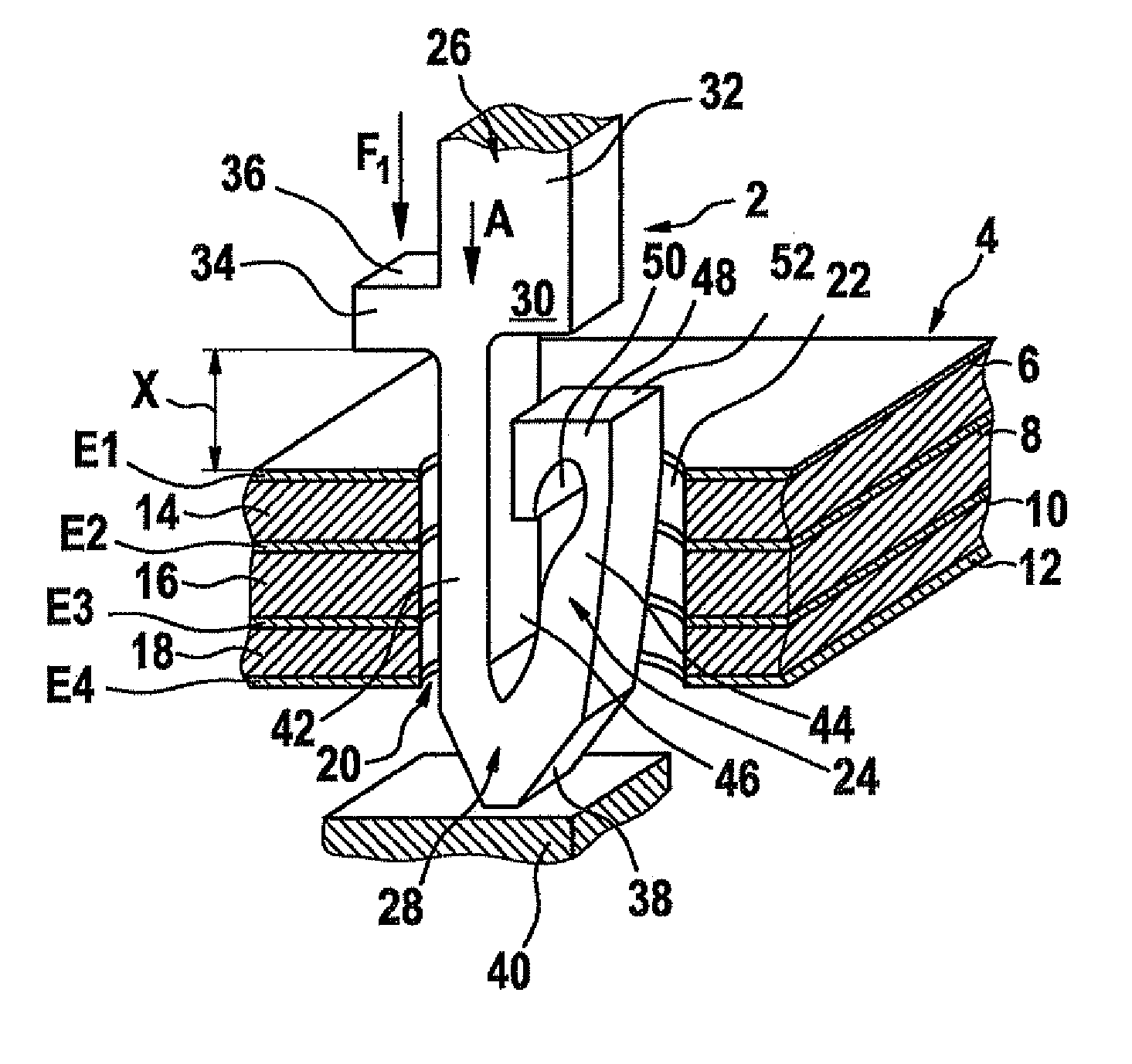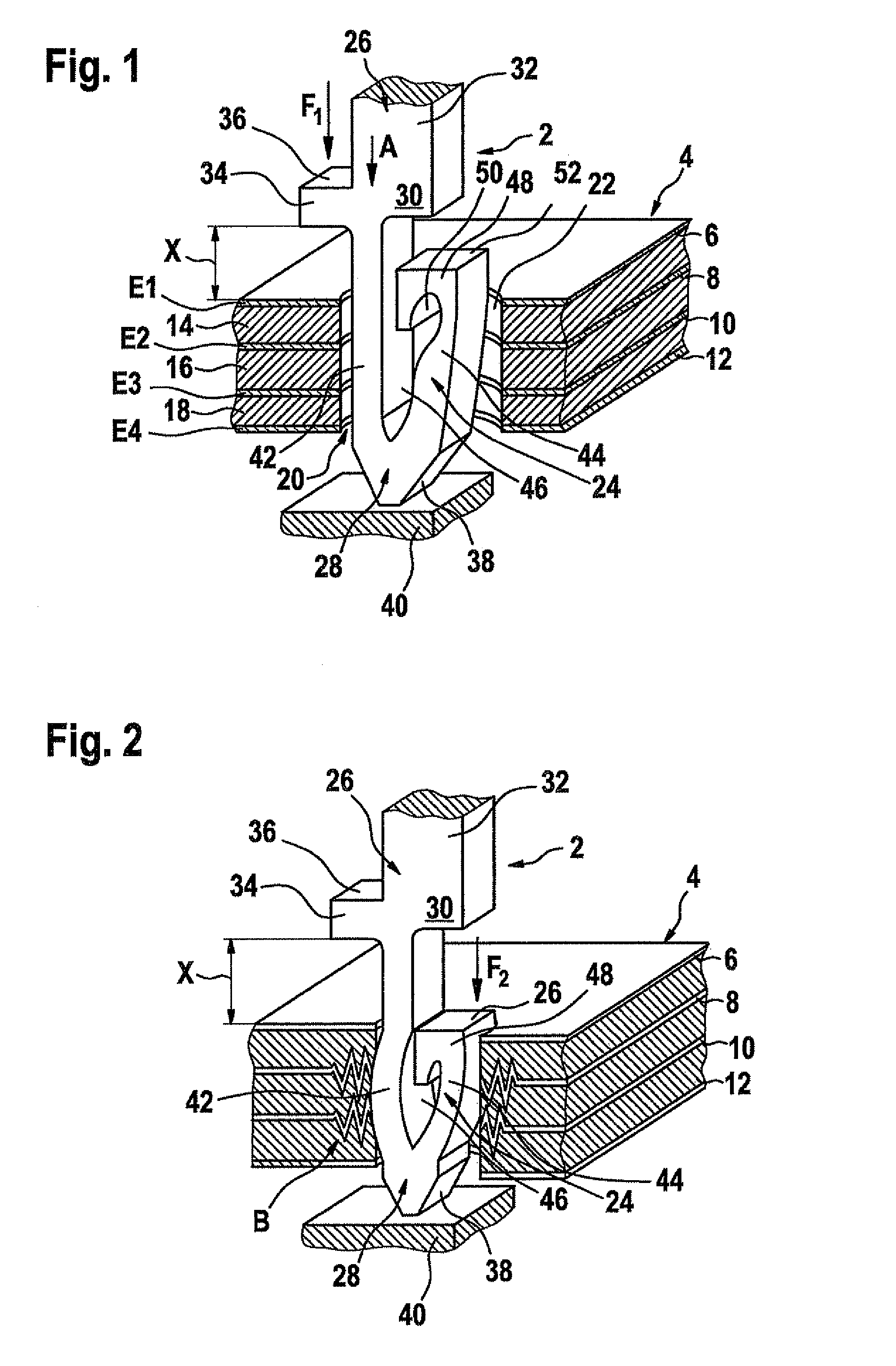Pin for insertion into a receiving opening in a printed circuit board and method for inserting a pin into a receiving opening in a printed circuit board
a technology of printed circuit boards and receiving openings, which is applied in the direction of fixed connections, manufacturing tools, coupling device connections, etc., can solve the problems of high reliability, reliably low transmission resistance, and the region of printed circuit boards bordering the receiving openings are also subject to high shear forces in the direction, so as to simplify the manufacture of contact parts and facilitate insertion. , the effect of optimal conta
- Summary
- Abstract
- Description
- Claims
- Application Information
AI Technical Summary
Benefits of technology
Problems solved by technology
Method used
Image
Examples
Embodiment Construction
[0017]Pin 2 illustrated in the Figures is used to establish a solder-free electrical connection between a printed circuit board 4 and an electrical or electronic component (not shown) which is to be subsequently mounted on printed circuit board 4, and from which pin 2, optionally together with additional pins, for example as part of a so-called male connector (not shown), projects.
[0018]Multilayer printed circuit board 4 illustrated in the Figures, for example printed circuit board 4 of an airbag control device of a motor vehicle, has a total of four interspaced conductor planes E1, E2, E3, E4, in each of which a printed circuit 6, 8, 10, 12 in the form of printed conductors made of a thin copper layer provided with recesses is situated. Two printed circuits 6 and 12 are located on the oppositely situated broadside surfaces of printed circuit board 4 and in each case form an outer layer, and two printed circuits 8 and 10 are located inside printed circuit board 4 and form two inner ...
PUM
| Property | Measurement | Unit |
|---|---|---|
| Force | aaaaa | aaaaa |
Abstract
Description
Claims
Application Information
 Login to View More
Login to View More - R&D
- Intellectual Property
- Life Sciences
- Materials
- Tech Scout
- Unparalleled Data Quality
- Higher Quality Content
- 60% Fewer Hallucinations
Browse by: Latest US Patents, China's latest patents, Technical Efficacy Thesaurus, Application Domain, Technology Topic, Popular Technical Reports.
© 2025 PatSnap. All rights reserved.Legal|Privacy policy|Modern Slavery Act Transparency Statement|Sitemap|About US| Contact US: help@patsnap.com


